Review on the Influence of Complex Stratum on the Drilling Trajectory of the Drilling Robot
Abstract
1. Instruction
2. Detection of Complex Formation and Measurement while Drilling Technology
2.1. Complex Formation Detection
2.2. Measurement while Drilling (MWD) Technology
3. Impact of Typical Complex Coal Seams on the Deviation of Drilling Tool Track
3.1. Conditions of Borehole Bending
3.2. Reasons for Hole Bending
4. Stratum Force Theory and Method of Complex Coal Seams
4.1. Quantitative Analysis of Formation Force
4.2. Geosteering Drilling Technology
5. Conclusions
Author Contributions
Funding
Institutional Review Board Statement
Informed Consent Statement
Data Availability Statement
Conflicts of Interest
References
- Peng, Z. Drilling Technology for Complex Formations; Central South University Press: Changsha, China, 2016. [Google Scholar]
- Hou, Y.; Zhou, M.; Zhang, D.; Fang, Q.; Sun, Z.; Tian, Y. Analysis of four shield-driven tunnels with complex spatial relations in a clay stratum. Tunn. Undergr. Space Technol. 2022, 124, 104478. [Google Scholar]
- Zhang, X.Y.; Zhang, L.W.; Wu, J.; Fu, H.; Dian, L.Y. Tunnel stability analysis of coral reef limestone stratum in ocean engineering. Ocean. Eng. 2022, 265, 112636. [Google Scholar] [CrossRef]
- Sm, A.; Zd, A.; Zhen, H.A.; Ying, L.A.; Yu, S.B.C. Study on the stability of shield tunnel face in clay and clay-gravel stratum through large-scale physical model tests with transparent soil. Tunn. Undergr. Space Technol. 2022, 119, 104199. [Google Scholar]
- Kong, L.; Chen, H.; Ping, H.; Zhai, P.; Zhu, J. Formation pressure modeling in the Baiyun Sag, northern South China Sea: Implications for petroleum exploration in deep-water areas. Mar. Pet. Geol. 2018, 971, 154–168. [Google Scholar] [CrossRef]
- Fu, M.; Zhang, P.; Li, J.; Wu, Y. Observer and reference governor based control strategy to suppress stick-slip vibrations in oil well drill-string. J. Sound Vib. 2019, 457, 32–41. [Google Scholar] [CrossRef]
- Hong, L.; Irving, P.; Jaspreet, S. Identification and control of stick-slip vibrations using Kalman estimator in oil-well drill strings. J. Pet. Sci. Eng. 2016, 1404, 119–127. [Google Scholar] [CrossRef]
- Wu, M.; Cheng, J.; Lu, C.; Chen, L.F.; Lai, X.Z. Disturbance estimator and smith predictor-based active rejection of stick–slip vibrations in drill-string systems. Int. J. Syst. Sci. 2020, 51, 826–838. [Google Scholar] [CrossRef]
- Alkaragoolee, M.; Bryant, D. Investigation into the effect of friction decay factor on the modelling and attenuation of stick-slip vibrations of oilwell drilling systems. Oil Gas (Engl.) 2022, 8, 8. [Google Scholar] [CrossRef]
- Teng, X.; Qinfeng, D.I.; Ning, L.I.; Chen, F.; Zhou, B.; Wang, M. Measurement and Analysis of Stick-Slip Characteristics of Drill String in Ultra-Deep Wells. Pet. Drill. Tech. 2017, 45, 32–39. [Google Scholar]
- Kawasaki, T.; Yamaguchi, K.; Takada, T.; Takabumi, S.; Yousuke, N. Correlation between color measurement and alteration of drilling core in the fault crush zone. Geol. Data Process. 2010, 10, 86–87. [Google Scholar] [CrossRef]
- Matsuda, T.; Arai, T.; IkedaR; Omura, K.; Kobayashi, K.; Sano, H.; Sawaguchi, T.; Shimada, K.; Tanaka, H.; Tomita, T. The distribution pattern of minerals, chemical elements in the fracture zone at 1300 m depth of core recoverd from drilling passing through Nojima Fault by NIED. —Compared with the fracture zone at 1140 m depth. In Meeting of the Geological Society of Japan; The Geological Society of Japan: Tsukuba, Japan, 1998. [Google Scholar]
- Zhang, W.; Li, H.B.; Huang, Y.; Si, J.L.; Sun, L.W. Lithologic characteristics and fault zone structure revealed by No.2 hole cores of the Wenchuan Earthquake Fault Zone Scientific Drilling (WFSD-2). Geol. Bull. China 2012, 31, 1201–1218. [Google Scholar]
- Ji, K.; Xu, X.; Survey, J.G. Geothermal Well Drilling Positioning through CSAMT in Baoying Area, Jiangsu. Coal Geol. China 2018, 30, 80–84. [Google Scholar]
- Qiu, A.; Bo, Z.; Qiu, A.; Li, Z. Drilling Failure Analysis and Remedial Measures of Coalbed Methane Multiple Laterals Wells. Unconv. Oil Gas 2018, 5, 88–92. [Google Scholar]
- Sun, Q. Impact and treatment of geological faults on coal mine production. Sci. Technol. Wind. 2013, 8, 122. [Google Scholar]
- Li, X. Brief analysis of the impact of geological faults on coal mine production and treatment. Heilongjiang Sci. Technol. Inf. 2014, 34, 102. [Google Scholar]
- Liu, C. Research status and prospect of drilling technology in broken and complex formations in China. Gansu Sci. Technol. 2010, 26, 78–80. [Google Scholar]
- Bennion, D.B.; Thomas, F.B. Formation Damage Issues Impacting the Productivity of Low Permeability, Low Initial Water Saturation Gas Producing Formations. J. Energy Resour. Technol. 2005, 127, 240–247. [Google Scholar] [CrossRef]
- Bilardo, U.; Alimonti, C.; Chiarabelli, A.; Caetani, F.C. Formation water saturation from drilling fluid filtrate invasion: Comparison of displacement modelling and induction well log response. J. Pet. Sci. Eng. 1996, 15, 251–259. [Google Scholar] [CrossRef]
- Gao, H.; Feng, M.; Wang, J.; Yu, T.; Shuai, L. Calculation on water saturation of Changxing Formation reservoir in Yuanba Gas Field. Fault-Block Oil Gas Field 2014, 21, 348–351. [Google Scholar]
- Małkowski, P.; Ostrowski, Ł.; Bożęcki, P. The impact of the mineral composition of Carboniferous claystones on the water-induced changes of their geomechanical properties. Geol. Geophys. Environ. 2017, 43, 43–55. [Google Scholar] [CrossRef]
- Sakhno, I.; Sakhno, S.; Skyrda, A.; Popova, O. Numerical Modeling of Controlling a Floor Heave of Coal Mine Roadways with a Method of Reinforcing in Wet Soft Rock. Geofluids 2022, 2022, 3855799. [Google Scholar] [CrossRef]
- Zhou, X.; Cai, W.; Cao, X.L.; Xiong, C. Influence of water content on mechanical properties of rock in both saturation and drying processes. Rock Mech. Rock Eng. 2016, 49, 3009–3025. [Google Scholar] [CrossRef]
- Qin, K.; Di, Q.; Zhou, X. Nonlinear dynamic characteristics of the drill-string for deep-water and ultra-deep water drilling. J. Pet. Sci. Eng. 2022, 2091, 09905. [Google Scholar] [CrossRef]
- Li, Y.; Zhang, T.; Tian, Z.; Zheng, Y.; Yang, Z. Simulation on compound percussive drilling: Estimation based on multidimensional impact cutting with a single cutter. Energy Rep. 2021, 7, 3833–3843. [Google Scholar] [CrossRef]
- Xia, Y.; Du, R.; Sun, X.; Du, S. Countermeasures of ecologic phreatic water protection and mine water disaster prevention in northern Shaanxi Coalfield. Coal Sci. Technol. 2016, 44, 39–45. [Google Scholar]
- Bu, C. Application and outlook of detection, prevention and control technique of coal mine water disaster. China Coal 2014, 40, 100–108. [Google Scholar]
- Zhai, L. Comprehensive Exploration Technology of Water Disaster Prevention and Control in Coal Mining Roof. Procedia Earth Planet. Sci. 2011, 33, 303–310. [Google Scholar] [CrossRef]
- Zhang, J.; Yao, N.P.; Qiao-Qiao, L.I. Application of Directional Drilling Technology in Mines Geological Exploration. Saf. Coal Mines 2013, 44, 131–134. [Google Scholar]
- Ningping, Y.; Jie, Z.; Xing, J.; Hanjing, H. Status and Development of Directional Drilling Technology in Coal Mine. Procedia Eng. 2014, 73, 289–298. [Google Scholar] [CrossRef]
- Shi, Z.; Chao, X.U.; Quanxin, L.I.; Zhang, J. Application of MWD Directional Drilling Technology in Geologic Exploration in Underground Coal Mine. Saf. Coal Mines 2014, 45, 137–140. [Google Scholar]
- Li-Meng, D.U.; Hao, S.; Pan-Pan, Y.; Junfeng, L.V. Application of Horizontal Directional Drilling Technology in Geological Structure Exploration in Hudi Coal Mine. Explor. Eng. (Rock Soil Drill. Tunn.) 2014, 41, 38–43. [Google Scholar]
- My, A.; Fei, C.B.; Jl, A.; DP, A.; ZA, A. Frequency-Domain Full-Waveform Inversion Based on Tunnel Space Seismic Data—ScienceDirect. Engineering 2021, 181, 197–206. [Google Scholar]
- Joseph, A.; Udofia, U.; Ajang, R. Evaluation of the water quality of borehole water from a partially remediated oil spill site in Ikot Ada Udo, Akwa Ibom State, South–South Nigeria. Environ. Technol. Innov. 2021, 24, 101967. [Google Scholar] [CrossRef]
- Zhao, E.; Li, K.; Yang, X.; Deng, N. Speculum Observation and Trajectory Measurement in Gas Extraction Drilling: A Case Study of Changling Coal Mine. Geofluids 2021, 554, 292–306. [Google Scholar]
- Wang, H.; Dong, S. Spatial Transverse Vibration Simulation Model of Axially Moving Sucker Rod String under the Excitation of Curved Borehole. Shock. Vib. 2020, 2020, 3108718. [Google Scholar] [CrossRef]
- Ma, H.; Wang, Y. Formation drillability prediction based on PSO-SVM. In Proceedings of the IEEE 2010 10th International Conference on Signal Processing, Beijing, China, 25–27 August 2010. [Google Scholar]
- Al, A.; Ak, B.; Mbm, C.; RD, C.; OR, C. On the prediction of filtration volume of drilling fluids containing different types of nanoparticles by ELM and PSO-LSSVM based models. Petroleum 2021, 8, 424–435. [Google Scholar]
- Shi, Z.; Dong, S.; Yao, N. Directional drilling technology and equipment for near-horizontal measurement while drilling in coal mine. Coal Sci. Technol. 2013, 41, 6. [Google Scholar]
- Shi, Z.; Wen, R.; Fang, J.; Quanxin, L.; Gao, J. Development of MWD system for underground directional drilling in coal seams. Coal Sci. Technol. 2013, 43, 109–113. [Google Scholar]
- Vezhapparambu, V.S.; Ellefmo, S.L. Estimating the blast sill thickness using changepoint analysis of MWD data—ScienceDirect. Int. J. Rock Mech. Min. Sci. 2020, 134, 104443. [Google Scholar] [CrossRef]
- Gao, J. Research on Data Transmission Technology in Mine-used MWD Systems. Zhongzhou Coal 2016, 4, 115–121. [Google Scholar]
- Ghiselin, D. MWD/LWD offers faster, more complete real-time data technology. Offshore: Inc. Oilman 2013, 73, 55–56. [Google Scholar]
- Isheysky, V.; Sanchidrián, J.A. Prospects of Applying MWD Technology for Quality Management of Drilling and Blasting Operations at Mining Enterprises. Minerals 2020, 10, 925. [Google Scholar] [CrossRef]
- Ming, D.; Chen, Q. Coal and gas outburst monitoring system based on WSN. Procedia Eng. 2010, 73, 387–391. [Google Scholar]
- Lu, C.; Zhang, T.; Zhao, H. Improving the application depth of electromagnetic measurement while drilling (EM-MWD) systems by receiving signals from adjacent wells. J. Appl. Geophys. 2021, 195, 104468. [Google Scholar] [CrossRef]
- Wang, Q.; Huang, L. Research and application of mine MWD device based on external power supply. Coal Sci. Technol. 2013, 41, 12–15. [Google Scholar]
- Fang, J.; Shi, Z.; Li, Q.; Gao, J. Wired MWD device is used for underground directional drilling in new coal mines. Ind. Min. Autom. 2015, 41, 1–5. [Google Scholar]
- Vladut, T.; Tweedy, D.H. Development of a MWD system for geomechanical drilling: Proc CARE 88 (Conference on Applied Rock Engineering), Newcastle, 6–8 January 1988 P235–242. Publ London: IMM, 1988. Int. J. Rock Mech. Min. Sci. Geomech. Abstr. 1989, 26, 75. [Google Scholar] [CrossRef]
- Song, C.; Jia, N.; Ji, W.; Tian, D. Application of directional drilling technology and equipment in directional long drilling through layers. Drill. Eng. 2021, 48, 6–14. [Google Scholar]
- Duan, H.; Hao, S.; Wang, Y. Application of directional drilling technology and equipment in large-diameter and long drilling of roof. Coal Min. Mach. 2020, 41, 4–12. [Google Scholar]
- Cheng, J.; Wu, M.; Chen, L. Observer-Based Tracking Control for Suppressing Stick-Slip Vibration of Drillstring System. In Proceedings of the 2018 37th Chinese Control Conference (CCC), Wuhan, China, 15–17 July 2018. [Google Scholar]
- Wang, Y.; Ni, H.; Tu, Y.P.; Wang, R.; Xie, H. Experimental Study on Axial Impact Mitigating Stick-Slip Vibration with a PDC Bit. Shock. Vib. 2021, 211, 1–8. [Google Scholar] [CrossRef]
- Gao, W.; Sheng, L.; Dou, X.; Lei, Z.; Lin, L. CGDS Near-Bit Geosteering Drilling System and Its Application in China. In Proceedings of the SPE/IATMI Asia Pacific Oil & Gas Conference and Exhibition, Bali, Indonesia, 20–22 October 2015. [Google Scholar]
- Zhao, C.; Liu, K. Research on pressure signal generation characteristics of positive pulse logging tool while drilling. J. Xi’an Univ. Technol. 2014, 30, 8–12. [Google Scholar]
- Zhu, L.; Wan, L.; Li, H.; Qi, P. Research on the propagation law of pressure pulse signal measured while drilling in deep wells. J. Pet. Nat. Gas 2014, 36, 108–113. [Google Scholar]
- Jiang, Z.; Xie, H.; Wen, G.; Huang, X. Design and application of underground electromagnetic wave wireless track-while-drilling measurement system in coal mine. Coal Field Geol. Exploration. 2017, 45, 156–161. [Google Scholar]
- Peng, Y.; Jiang, Z.; Wang, J. Design of turbogenerator magnetic drive for automatic vertical drilling tools. Pet. Drill. Prod. Technol. 2014, 36, 3–12. [Google Scholar]
- Tao, J. Research on Electromagnetic Wave Through-The-Earth Wireless Communication for Coal Mine Disaster. In Proceedings of the International Conference on Web Information Systems & Mining, Taiyuan, China, 24–26 September 2011; Springer: Berlin/Heidelberg, Germany, 2011. [Google Scholar]
- Yang, C.; Han, L.; Zhang, S.H. New progress and development direction of modern vertical drilling technology. Pet. Drill. Technol. 2007, 35, 16–19. [Google Scholar]
- Zhang, S. Vertical drilling technology for deep well, ultra-deep well and complex structure well. Pet. Drill. Technol. 1998, 26, 50–53. [Google Scholar]
- Zhou, Q.F.; Zhang, P. Optimization of Bit Structure Design for Coal Mine Well Construction Tunnel Boring Machine. Coal Technol. 2014, 55, 688–695. [Google Scholar]
- Moran, J.H.; Gianzero, S. Effects of formation anisotropy on resistivity-logging measurements. Geophysics 2012, 44, 1266–1286. [Google Scholar] [CrossRef]
- Zuo, P.; Liu, Y.; Fan, Z. Modeling of acoustoelastic borehole waves subjected to tectonic stress with formation anisotropy and borehole deviation. Geophys. J. Soc. Explor. Geophys. 2022, 87, 1–9. [Google Scholar] [CrossRef]
- Cao, W.; Liu, W.; Liu, H. Effect of formation strength anisotropy on wellbore shear failure in bedding shale. J. Pet. Sci. Eng. 2022, 208PB. [Google Scholar] [CrossRef]
- Bisu, C.; Dinu, G.; Zapciu, M. Metrological Determination of Torque for Monitoring During Composite Drilling Process. Macromol. Symp. 2021, 396, 129–140. [Google Scholar] [CrossRef]
- Li, S. Drilling Technology; Geological Publishing House: Beijing, China, 1989. [Google Scholar]
- Lin, T.J.; Lian, Z.H.; Zhang, J.L.; Wei, C.X.; Chen, S.C. Comparative Study on Dynamics Behaviors of the Full Drillstring between Gas Drilling And Mud Drilling. J. Southwest Pet. Univ. (Sci. Technol. Ed.) 2011, 33, 139–143. [Google Scholar]
- Herzhaft, B.; Dalmazzone, C. Gas Hydrate Formation in Drilling Mud Characterized with DSC Technique. In Proceedings of the SPE Annual Technical Conference and Exhibition, New Orleans, LA, USA, 30 September–3 October 2001. [Google Scholar]
- Zhang, L.; Li, H.; Guo, J.; Zhu, Y.; Zhang, L. Improving mud carrying capacity in directional drilling of rock formation. Oil Gas Storage Transp. 2016, 35, 567–570. [Google Scholar]
- Lou, E.; Zhou, B.; Liu, H.; Chen, F.; Wang, W.; Xue, Y. Effect of Irregular Wellbores on Well Deviation in Air Drilling Through Thick Conglomerate Formations. Pet. Drill. Tech. 2021, 49, 62–66. [Google Scholar]
- Cheng, L.; Zeng, Z.; Dong, Y. Limit Analysis of Progressive Asymmetrical Collapse Failure of Tunnels in Inclined Rock Stratum. Symmetry 2019, 11, 904. [Google Scholar]
- Zhao, H.; Wang, X.; Liu, Z.; Yan, Y.; Yang, H. Investigation on the hydraulic fracture propagation of multilayers-commingled fracturing in coal measures. J. Pet. Sci. Eng. 2018, 167, 774–784. [Google Scholar] [CrossRef]
- Wang, J.D.; Dou, Y.H.; Cao, Y.P.; Zhi, X. Collapsing Strength Analysis of Bending Part Casing in Horizontal Wells under Three-Point Bending. Appl. Mech. Mater. 2015, 713–715, 57–60. [Google Scholar] [CrossRef]
- Han, C.; Sun, P.; Wu, X.; Zhong, S. Analysis of Influence Factors on Borehole Path Control Associated with Horizontal Directional Drilling. In Proceedings of the Conference of the International Maritime Commission, Beijing, China, 14–19 October 2012. [Google Scholar]
- Chang, C.; Mcneill, L.C.; Moore, J.C.; Lin, W.; Conin, M.; Yamada, Y. In situ stress state in the Nankai accretionary wedge estimated from borehole wall failures. Geochem. Geophys. Geosyst. 2013, 11, 324–332. [Google Scholar] [CrossRef]
- Zhu, L.J.; Chen, J.J.; Zou, Y.F. Study on Determination Displacement Angle of Stratum under Mining in Deep-lying Conditions. Coal Eng. 2006, 2, 45–49. [Google Scholar]
- Shi, B.; Zhu, C. Discussion on arithmetic of main influence angle of stratum for prediction of ground settlement. Water Resour. Hydropower Eng. 2011, 42, 13–18. [Google Scholar]
- Zhao, Y.G.; Deng, W.; Shi, S.Y. Design and Application of New PDC Bit in Coal-measures Soft and Hard Interbeded Formation. Explor. Eng. (Rock Soil Drill. Tunn.) 2008, 7, 97–102. [Google Scholar]
- Zakeri, V.; Fabri, F.; Karasawa, M.; Hodgson, A. A Machine Learning Approach to Discriminate between Soft and Hard Bone Tissues Using Drilling Sounds. In Proceedings of the 17th Annual Meeting of the International Society for Computer Assisted Orthopaedic Surgery, Aachen, Germany, 14–17 June 2017. [Google Scholar]
- Wang, Y.; Chen, X.F.; Sun, L.Z.; Yao, Z.Q. The Application of Pre-bending Drilling Technology in Soft and Hard Staggered Formations. Sci. Technol. Eng. 2019, 19, 136–140. [Google Scholar]
- Zhou, H. A novel method for fast calibration of underground drilling azimuth. Shaanxi Coal 2017, 4, 129–131. [Google Scholar]
- Liu, X. Borehole trajectory uncertainty and its characterization. Pet. Explor. Dev. Engl. Version 2019, 46, 6. [Google Scholar] [CrossRef]
- Liu, X. Quantitative recognition method for borehole trajectory models. Pet. Explor. Dev. 2018, 45, 154–158. [Google Scholar] [CrossRef]
- Dvoynikov, M.V. Research on technical and Technological parameters of inclined drilling. J. Min. Inst. 2017, 223, 86–92. [Google Scholar]
- Yang, C. Trajectory Control Technology of the Shallow Layer Cluster Horizontal Well in Western Margin of the Junggar Basin. Adv. Pet. Explor. Dev. 2015, 9, 119–126. [Google Scholar] [CrossRef]
- Levinson, L.M.; Khafizov, A.R.; Gaymaletdinova, G.L.; Ismagilova, E.R. Technology of Well Trajectory Control Applying Stem Assembly Rotation and Eliminating Rotary Controlled Systems. Pet. Eng. 2020, 18, 15–21. [Google Scholar] [CrossRef]
- Cao, J.; Wiktorski, E.; Sui, D. Well Trajectory Optimization with an Emphasis on Anticollision Design. J. Offshore Mech. Arct. Eng. 2022, 4, 144–153. [Google Scholar] [CrossRef]
- Inglis, T.A. Directional Drilling; Graham&Trotman: London, UK, 1987. [Google Scholar]
- Tripathi, A. Directional Drilling and Deviation Control Technology; Scitus Academics: New Delhi, India, 2016. [Google Scholar]
- Fang, J. Mine cable geosteering MWD device and geological directional drilling technology. Coal Sci. Technol. 2017, 45, 168–173. [Google Scholar]
- Liu, C.R. Chapter 11-Ahead-of-the-Bit Tools and Far Detection Electromagnetic Tools. Theory Electromagn. Well Logging 2017, 407–446. [Google Scholar]
- Wang, Z.; Wang, H.; Davis, T.; Li, J.; Wu, S.; Ren, W.; Liu, R.C. Development of a directional resistivity logging-while-drilling tool using a joint-coil antenna and its geosteering applications Directional LWD tool with a joint coil. Geophysics 2018, 83, 165–171. [Google Scholar] [CrossRef]
- Yang, Z.; Hu, Y.; Zhong, J. Influence of engineering geological factors on drilling speedup. Fault-Block Oil Gas Field 2010, 17, 363–365. [Google Scholar]
- Hui, X. Research on the technology of fast sliding directional drilling. Petrochem. Ind. Technol. 2015, 12, 34. [Google Scholar]
- Liu, X. Directional deflection equations for steerable drilling tools and the control mechanism of wellbore trajectory. Pet. Explor. Dev. 2017, 44, 788–793. [Google Scholar] [CrossRef]
- Hussain, B.; Gazi, N.H.; Alsabea, S.; Al-Zankawi, O.; Ali, F.; Aqeel, A.M.; Keot, C.J.; Juyal, M.; Wenang, M. GeoSteering in Complex Channel Sand Architecture, a Reality Now with High Definition Deep Directional Multi Boundary Detecting Technology: Case Study From Greater Burgan Field, Kuwait. In Proceedings of the IADC/SPE Asia Pacific Drilling Technology Conference, Singapore, 22–24 August 2016. [Google Scholar]
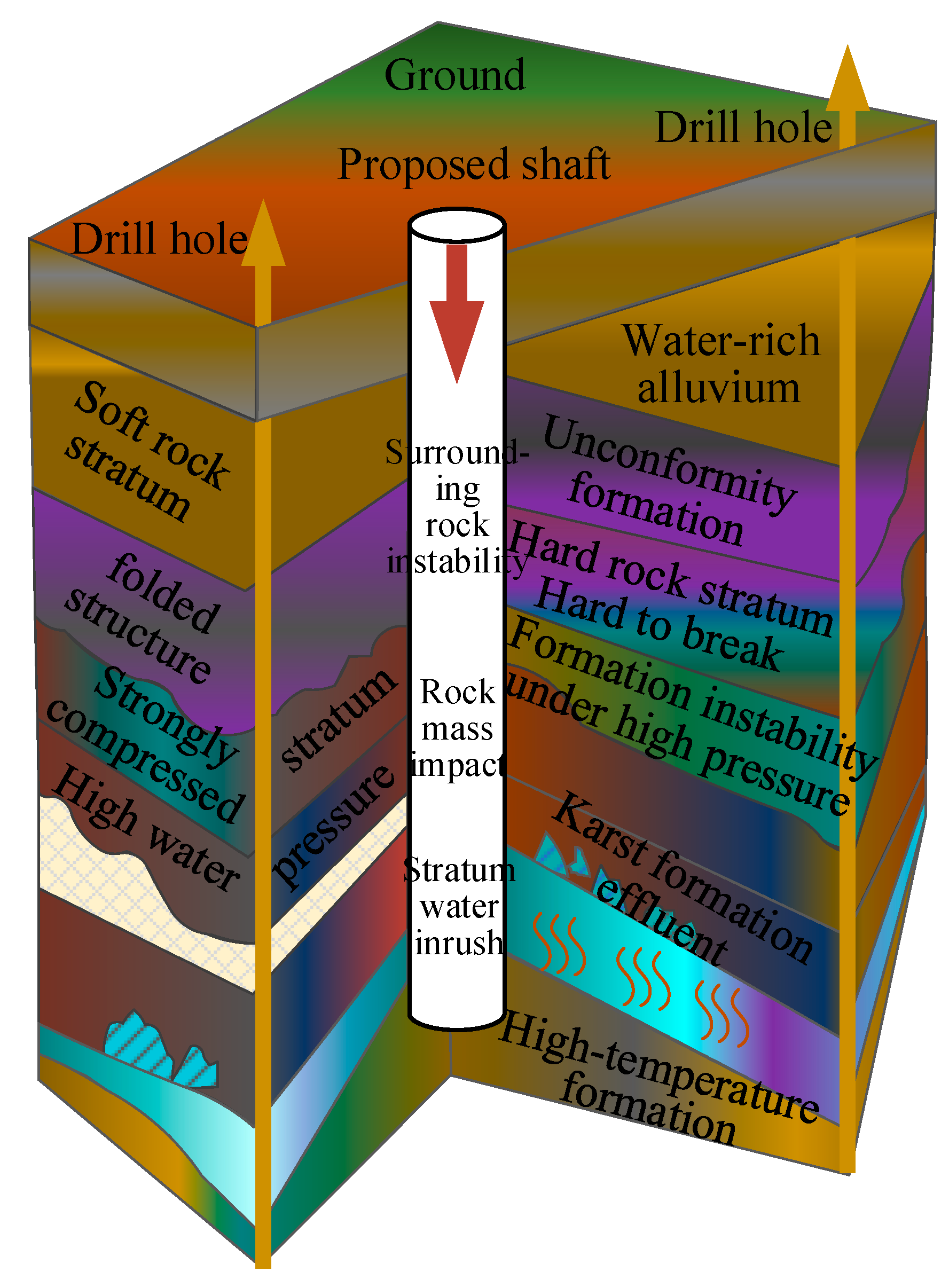
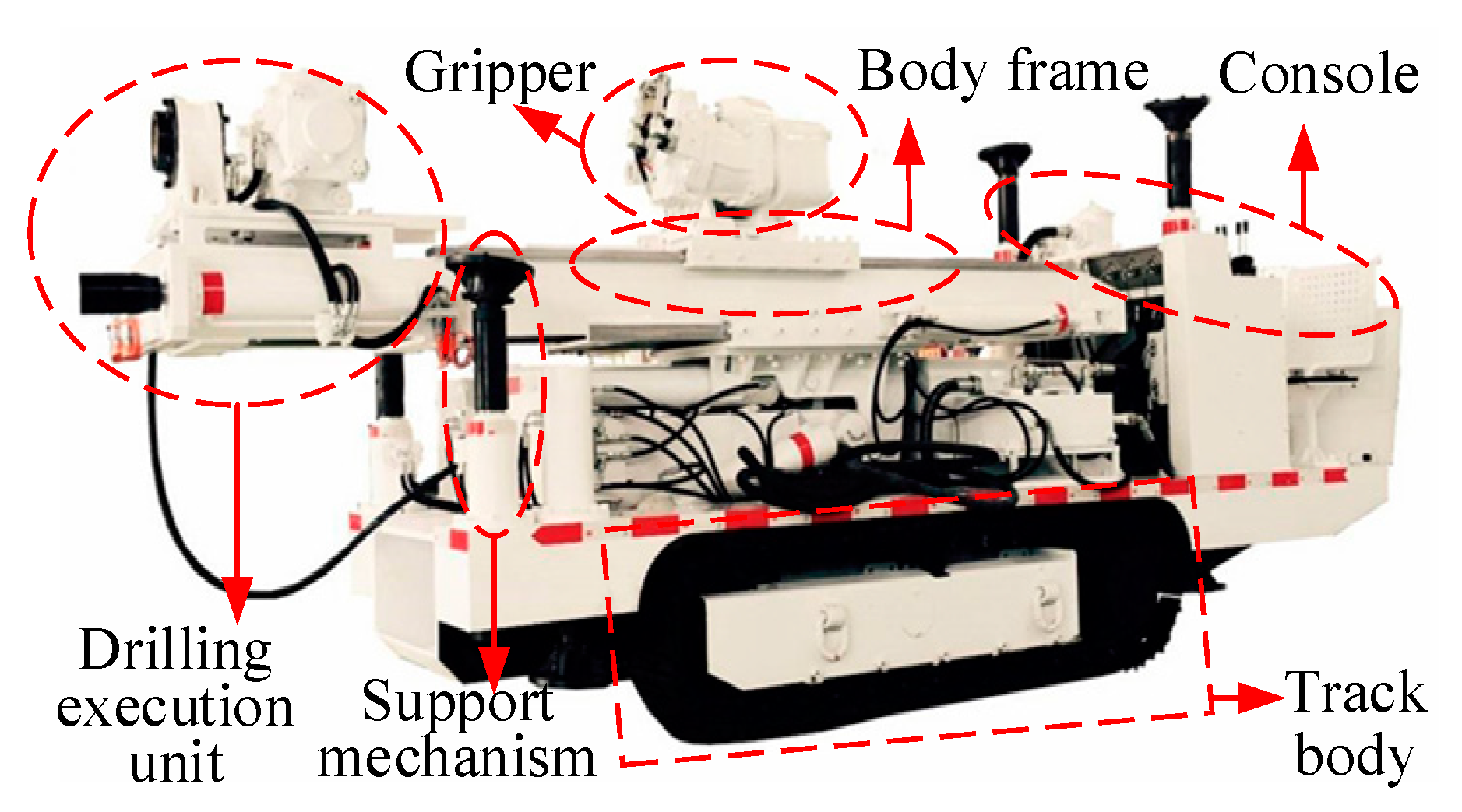
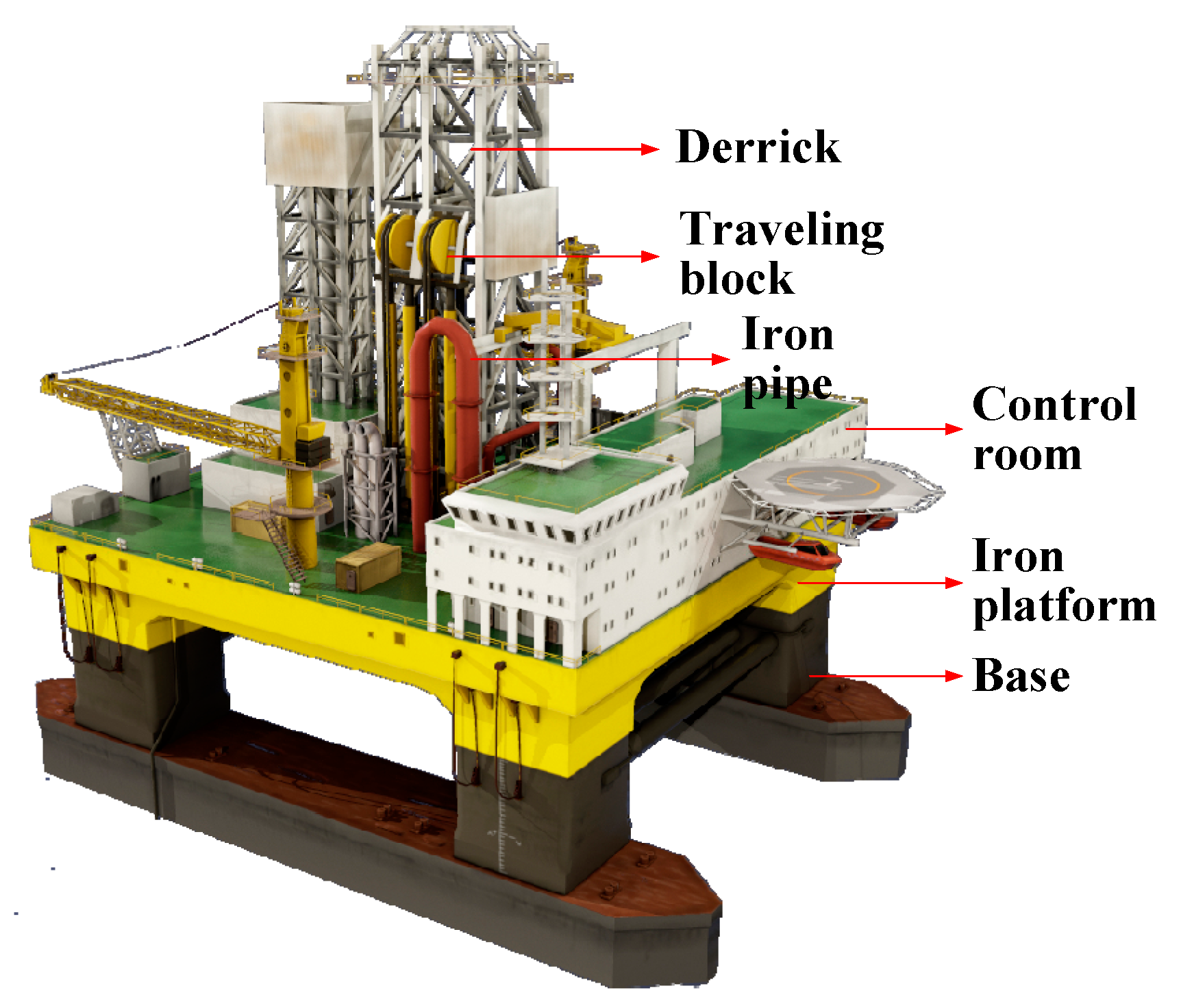
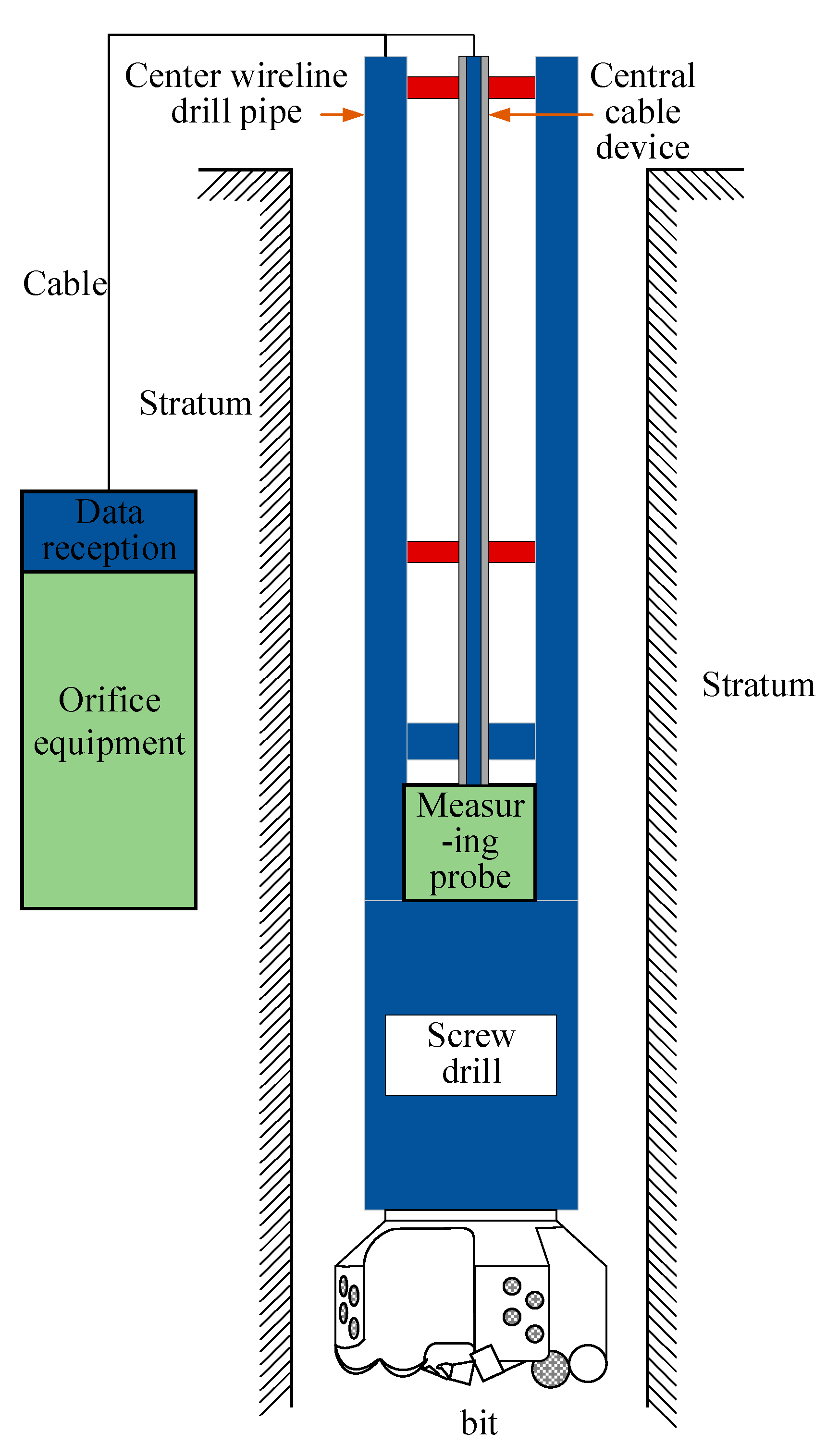
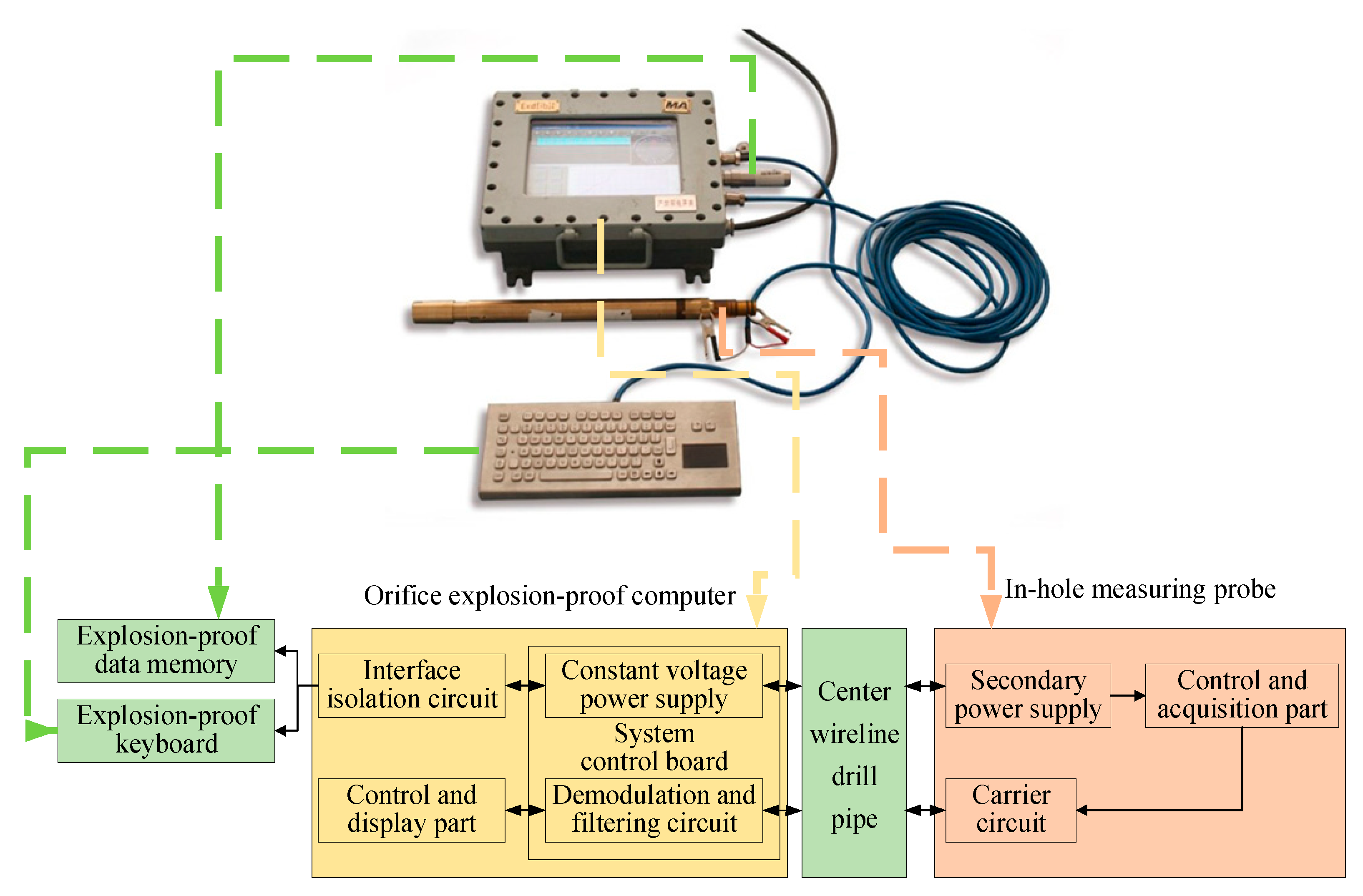


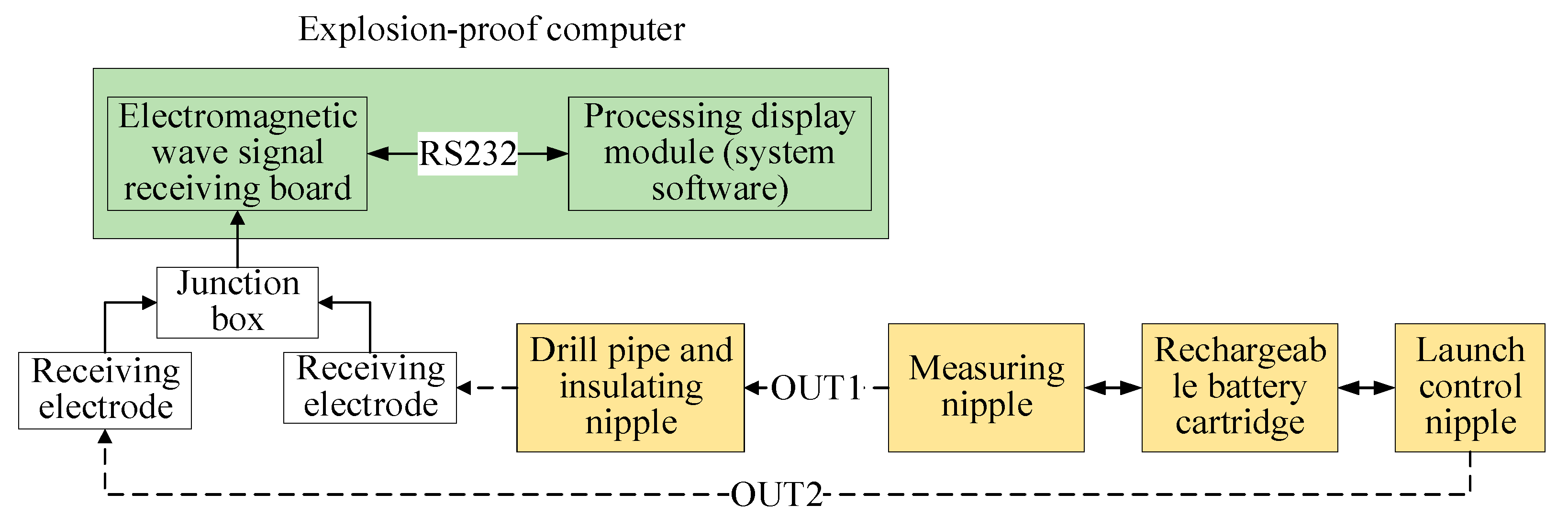
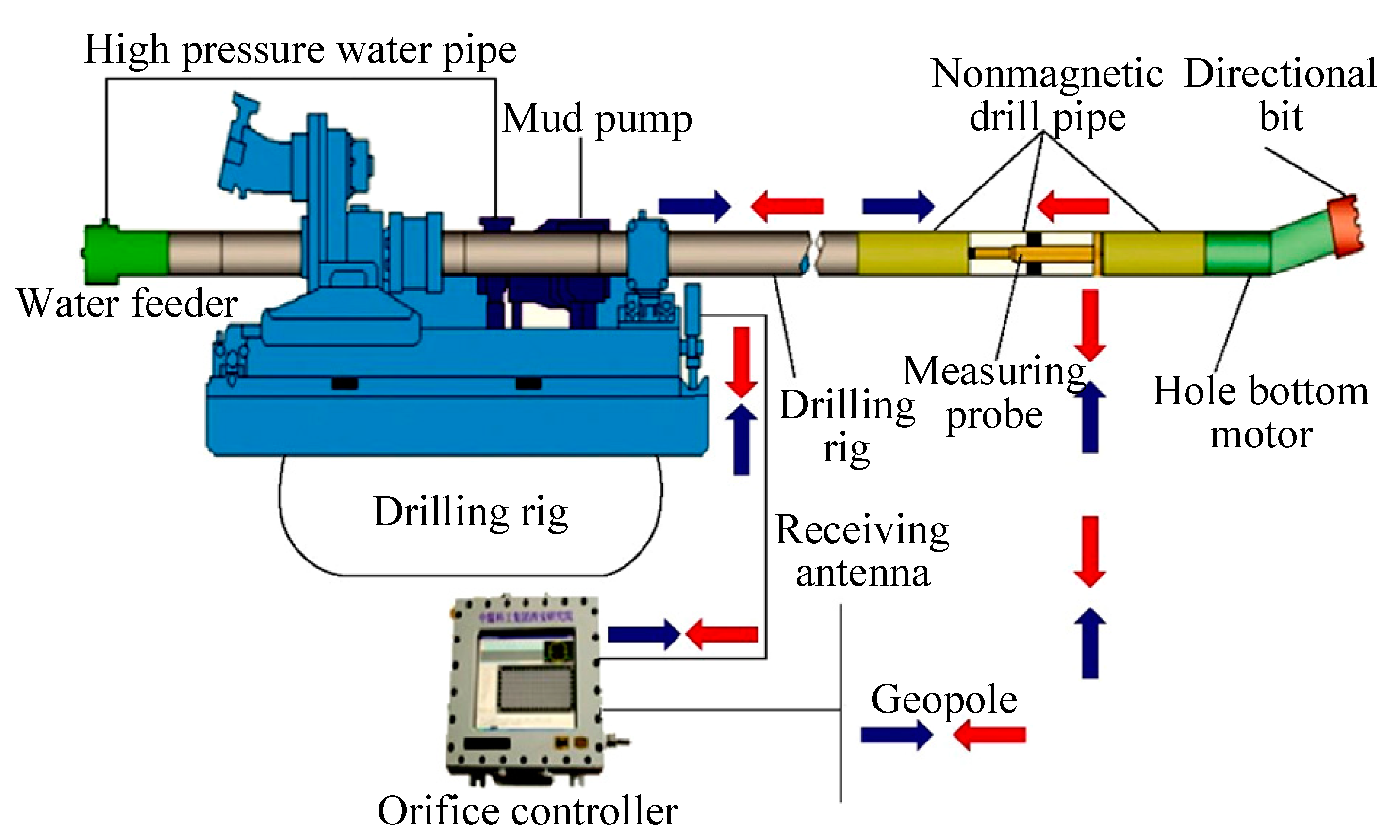
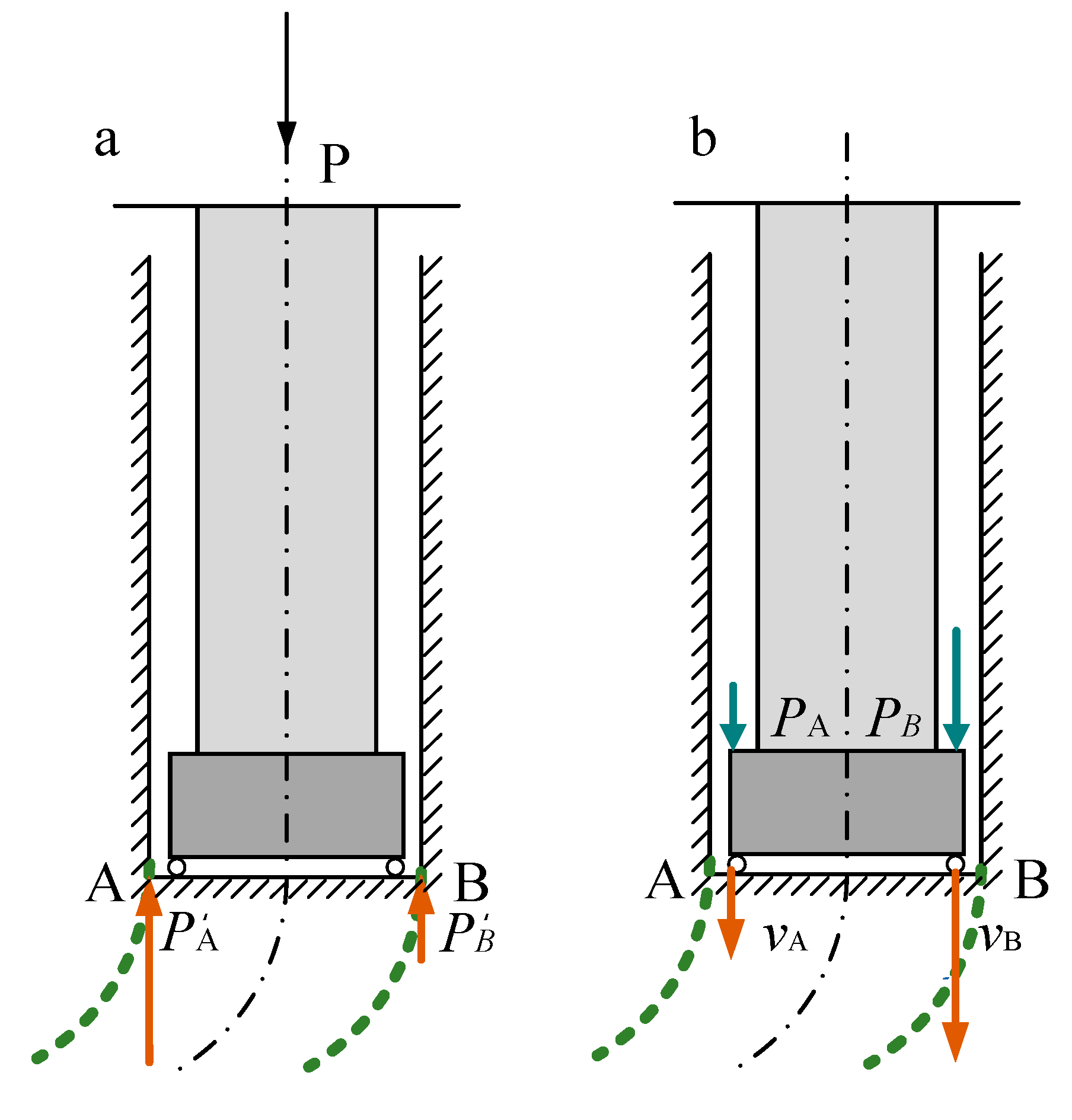
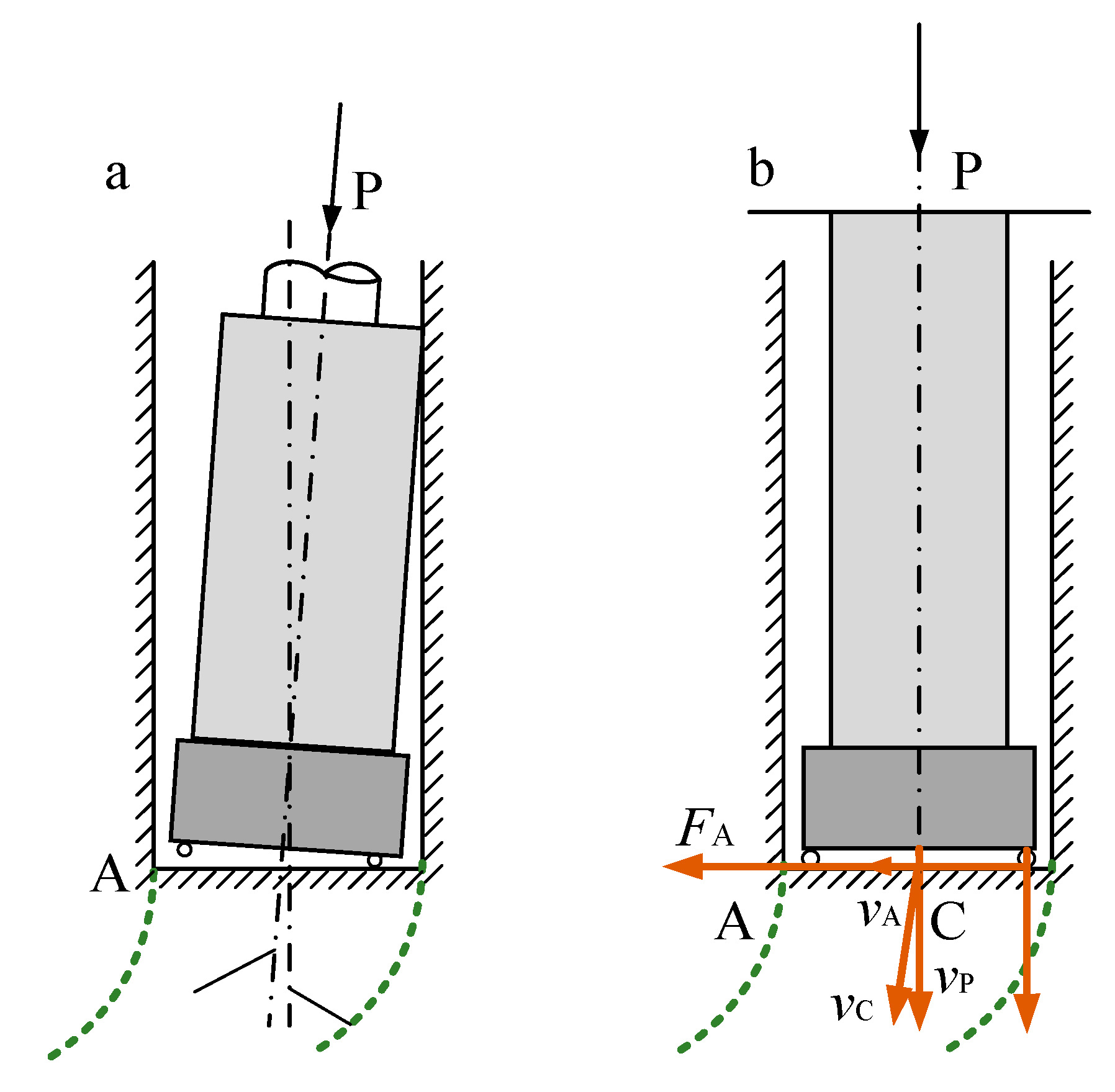

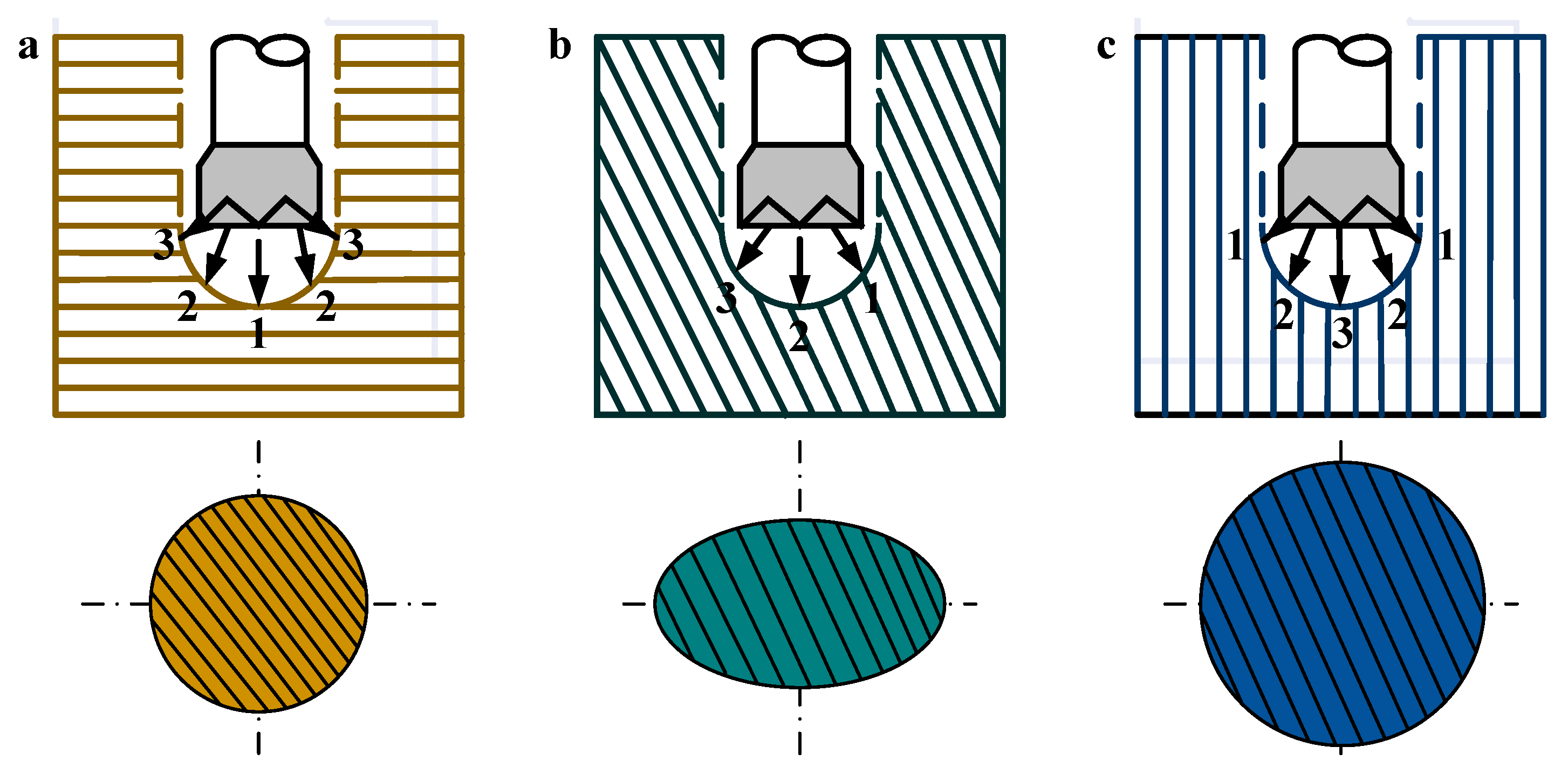
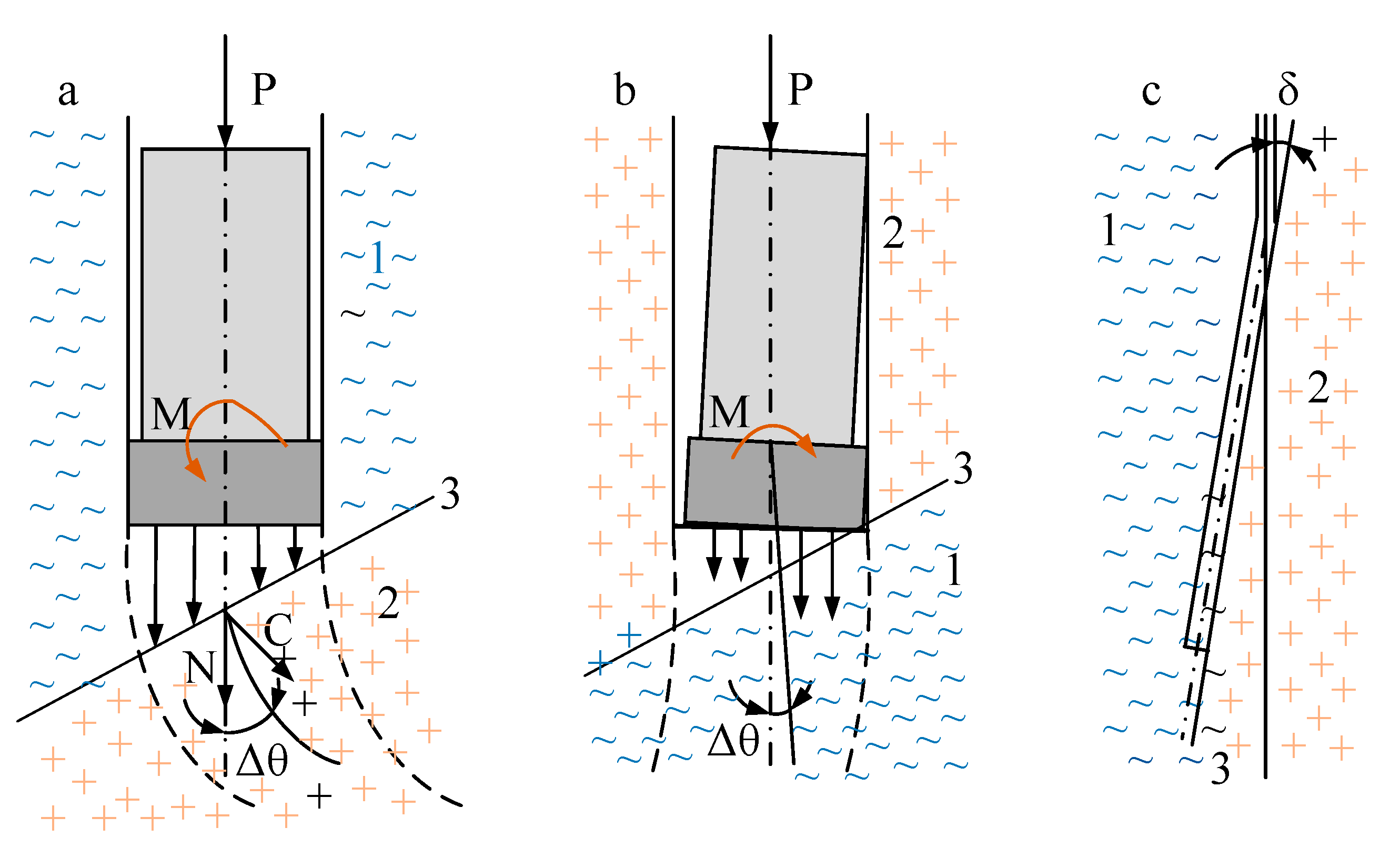
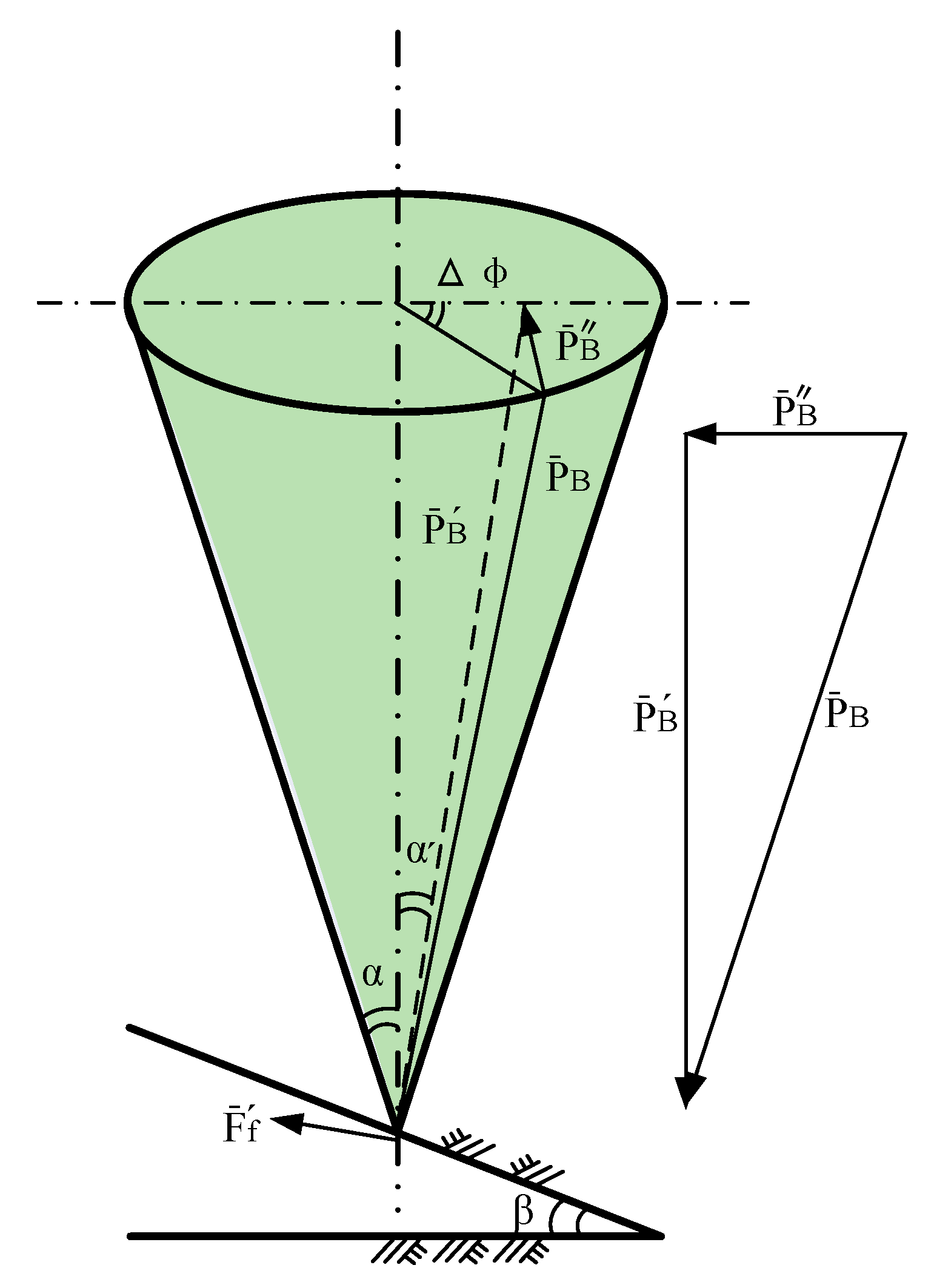
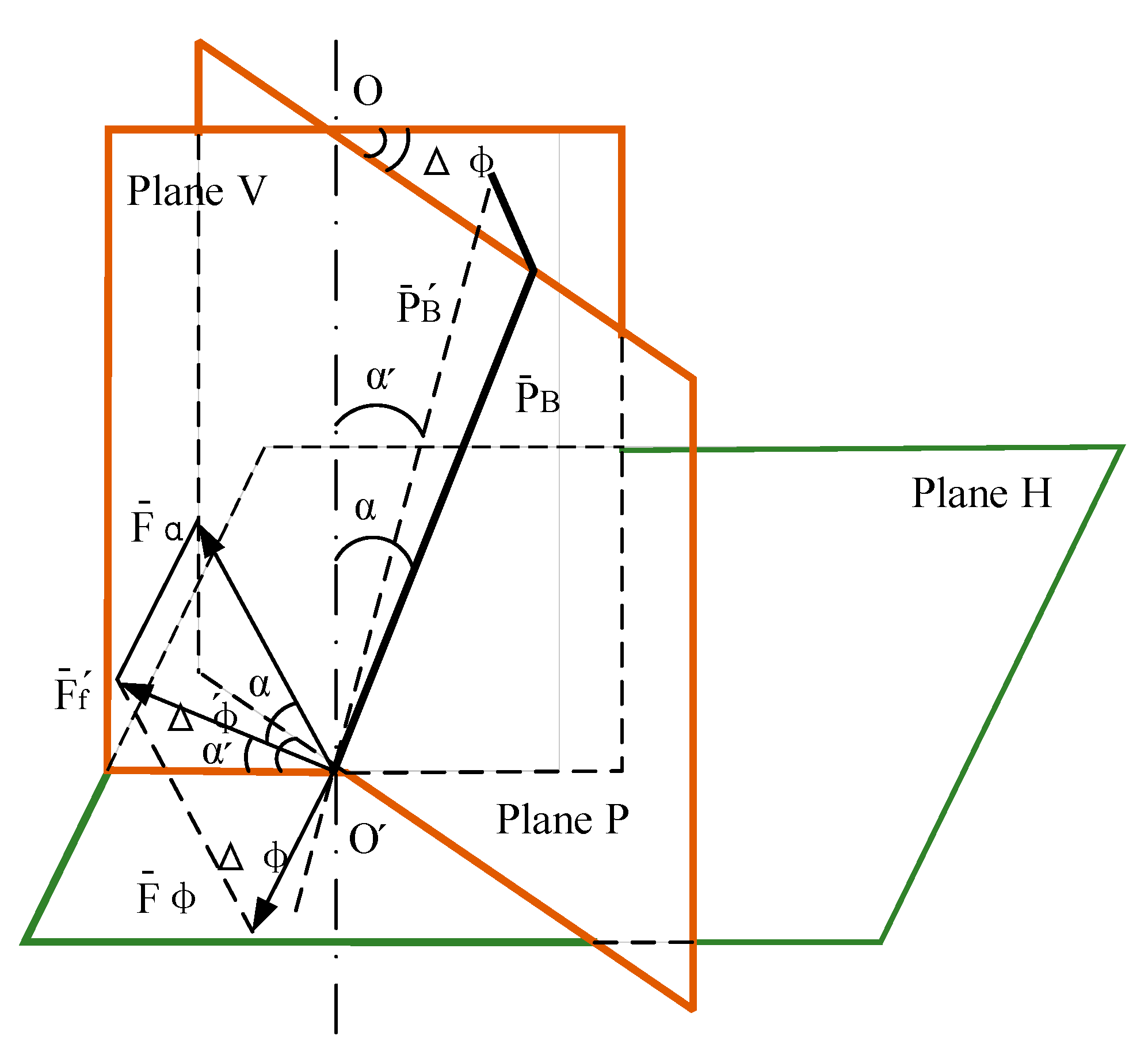
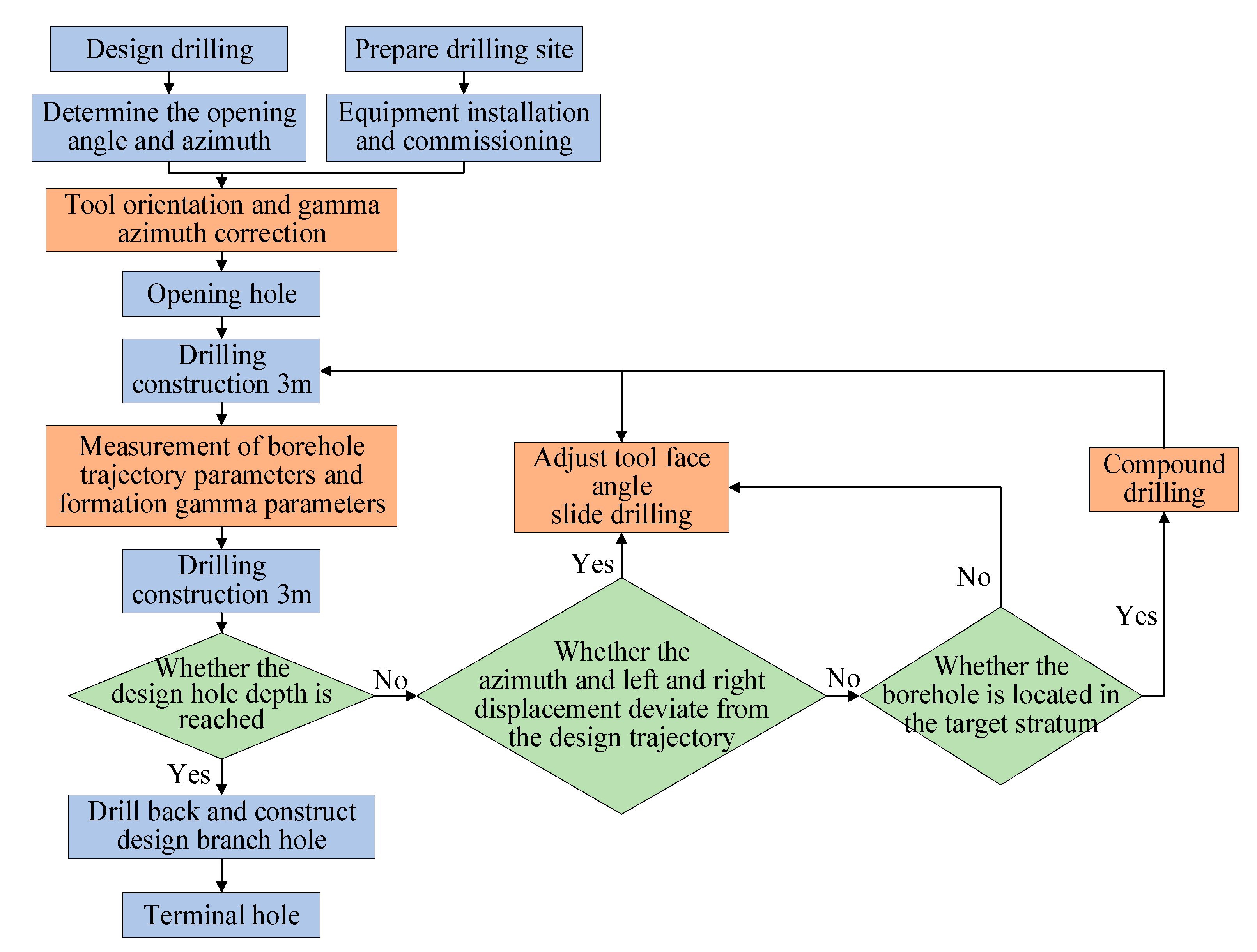
| Parameter | + | - | 0 |
|---|---|---|---|
| Clination (↑) | Declination (↓) | Invariant oblique (-) | |
| Increase azimuth (→) | Azimuth reduction (←) | Invariant orientation (|) |
| Updip | Downdip | |||
|---|---|---|---|---|
| Quadrant of | ||||
| I | + | − | − | + |
| II | − | − | + | + |
| III | − | + | + | − |
| IV | + | + | − | − |
Disclaimer/Publisher’s Note: The statements, opinions and data contained in all publications are solely those of the individual author(s) and contributor(s) and not of MDPI and/or the editor(s). MDPI and/or the editor(s) disclaim responsibility for any injury to people or property resulting from any ideas, methods, instructions or products referred to in the content. |
© 2023 by the authors. Licensee MDPI, Basel, Switzerland. This article is an open access article distributed under the terms and conditions of the Creative Commons Attribution (CC BY) license (https://creativecommons.org/licenses/by/4.0/).
Share and Cite
Kang, M.; Hua, D.; Guo, X. Review on the Influence of Complex Stratum on the Drilling Trajectory of the Drilling Robot. Appl. Sci. 2023, 13, 2532. https://doi.org/10.3390/app13042532
Kang M, Hua D, Guo X. Review on the Influence of Complex Stratum on the Drilling Trajectory of the Drilling Robot. Applied Sciences. 2023; 13(4):2532. https://doi.org/10.3390/app13042532
Chicago/Turabian StyleKang, Mingxia, Dezheng Hua, and Xiaoqiang Guo. 2023. "Review on the Influence of Complex Stratum on the Drilling Trajectory of the Drilling Robot" Applied Sciences 13, no. 4: 2532. https://doi.org/10.3390/app13042532
APA StyleKang, M., Hua, D., & Guo, X. (2023). Review on the Influence of Complex Stratum on the Drilling Trajectory of the Drilling Robot. Applied Sciences, 13(4), 2532. https://doi.org/10.3390/app13042532






